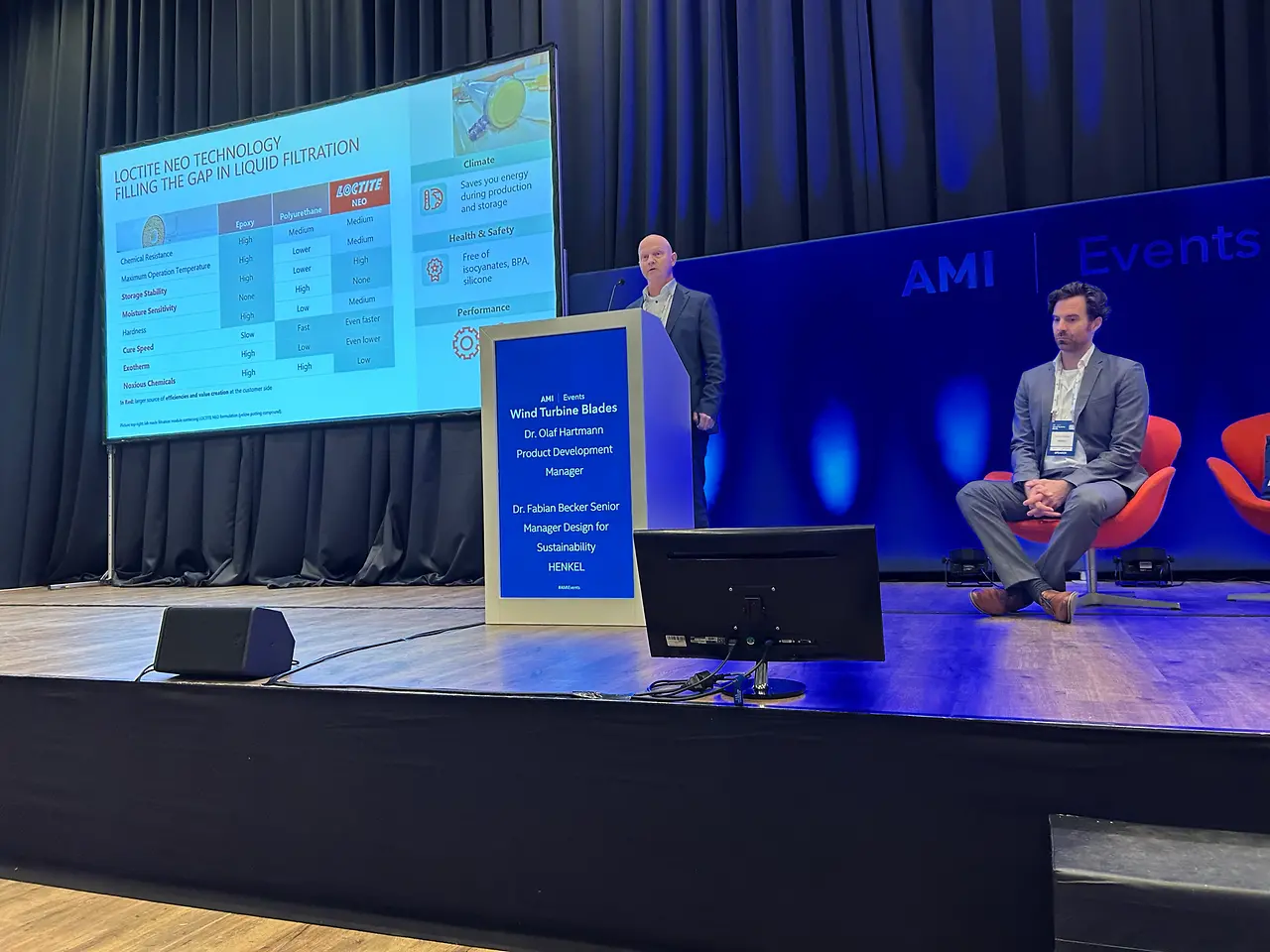Henkel is recognized as an enduring and trusted supplier for alternative energy technologies, with wind and solar material solutions that support system structural robustness, electrical function, and operational reliability. The company has a broad portfolio for wind turbines, including mold release agents, surface treatments, structural adhesives, thermal management materials, and sealants integral to efficient turbine manufacture and reliable in-field operation. As a respected sustainability leader, Henkel is committed to reducing emissions throughout the value chain, recognizing that more than 80% of a product’s carbon footprint is determined in the design phase. This is why the company focuses on early engagement in its customers’ product development cycles, where more impactful protocols can be established.
“While using alternative energy is essential to meeting climate change challenges, solving the equation encompasses more than just the use phase. Climate-preserving energy systems should also be produced with sustainable processes and materials,” says Luis Quiroga, Lead Application Engineer at Henkel. “Henkel partners with OEMs and Tier 1 suppliers at the design stage to understand how the entire wind turbine structure – from tower to nacelle to blades – can multiply environmental objectives by using sustainable materials and production methodologies that reduce CO2 emissions from cradle to gate.”
The Henkel session at the Wind Turbine Blades conference, entitled “Pioneering Sustainable Co-development for Wind Energy”, presented the company’s ‘Re-Create’ design for sustainability program, during which Dr. Fabian Becker, Henkel Senior Manager Design for Sustainability, detailed the team’s analysis know-how and shared several examples of emission reduction success. Additionally, Henkel Product Development Manager Dr. Olaf Hartmann unveiled a safer adhesive platform, Loctite NEO, that is neither a polyurethane nor an epoxy, yet delivers tough, durable, water-resistant multi-substrate adhesion in a formulation that contains no isocyanates, BPAs, or CMRs. These characteristics are vital for wind turbine manufacturing and maintenance worker safety, as well as structural reliability and longevity.
“Sustainability has several pillars,” notes Quiroga. “Besides emission reduction, operator health and safety, natural resource preservation, and circularity are critical. Achieving these objectives must be balanced with product performance. Loctite NEO is groundbreaking in the safety realm, while our work on debondable adhesives stands to enable the re-use of high-value components. We are encouraged by the response from conference attendees and thought leaders and look forward to future collaboration for wind turbine innovation. Henkel and our industry peers understand that climate change progress will require a whole of industry approach, which this gathering certainly underscored.”
For more information about Henkel formulations powering alternative energy systems, visit https://next.henkel-adhesives.com/us/en/industries/power/wind.html. Wind turbine OEMs interested in partnering with Henkel on future technology and design for sustainability engagement are invited to connect with Luis Quiroga luis.quiroga@henkel.com.






